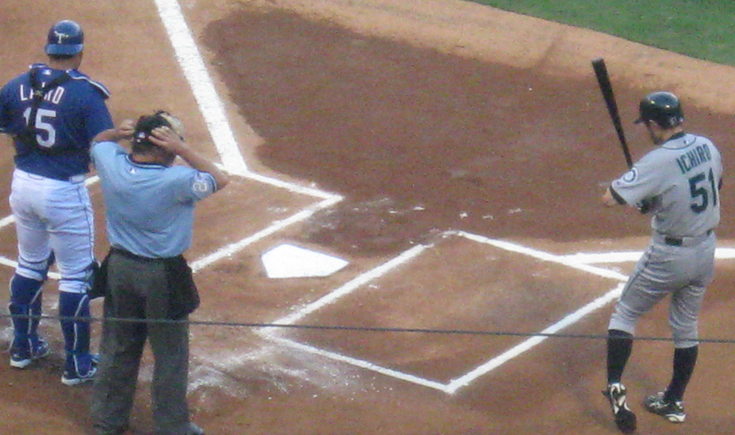Experimental Rules To Speed Up Game May Eliminate Four Pitch Intentional Walks
Maybe that’s why MLB seems to be finally serious about trimming the ever-expending game times. Earlier this week, the league announced six proposed rule changes to speed up the games pace. The experimental regulations will be tested out during the Arizona Fall League. Here are the six proposal, via a MLB press release:
1. Batter’s Box Rule: “The batter shall keep at least one foot in the batter’s box throughout his at-bat, unless one of a series of established exceptions occurs, in which case the batter may leave the batter’s box but not the dirt area surrounding home plate.”
2. No-Pitch Intentional Walks: “In the event a team decides to intentionally walk a batter, no pitches shall be thrown. Instead, the manager shall signal to the home plate umpire with four fingers, and the batter should proceed to first base to become a runner.”
3. 20-Second Rule: (To be used only at AFL games played at Salt River Fields) “A modified version of Rule 8.04, which discourages unnecessary delays by the pitcher, shall apply. Rule 8.04 requires the pitcher to deliver the ball to the batter within 12 seconds after he receives the ball with the bases unoccupied. The penalty prescribed by Rule 8.04 for a pitcher’s violation of the Rule is that the umpire shall call ‘Ball.’
“In the AFL games at Salt River, a clock will be displayed in both dugouts, behind home plate, and in the outfield. The clock will be operated by an independent operator, who is not a member of the umpire crew. A pitcher shall be allowed 20 seconds to throw each pitch…. The clock will stop only when the pitcher begins his motion to deliver the ball (and not ‘when the pitcher releases the ball’ as prescribed in Rule 8.04). Beginning the motion of coming to the set position shall be sufficient to stop the clock. If the pitcher maintains possession of the ball without beginning his pitching motion for more than 20 seconds, the Umpire shall call ‘Ball.’”
4. 2:05 Inning Break Clock: “There shall be a maximum 2:05 break between innings. Hitters must enter the batter’s box by the 1:45 mark. When batters violate this rule, the Umpire may call an automatic strike. When batters are set by the appropriate time and pitchers fail to throw a pitch before the conclusion of the 2:05 period, the Umpire shall call a ball.”
5. 2:30 Pitching Change Break Clock: “There shall be a maximum 2:30 break for pitching changes, including pitching changes that occur during an inning break. The first pitch must be thrown before the conclusion of the 2:30 period or the umpire shall call a ball. The clock shall start when the new pitcher enters the playing field (i.e., crosses the warning track, or foul line).”
6. Three “Time Out” Limit: “Each team shall be permitted only three ‘Time Out’ conferences per game (including extra innings). Such conferences shall include player conferences with the pitcher (including the catcher), manager or coach conferences with the pitcher, and coach conferences with a batter. Conferences during pitching changes, and time outs called as a result of an injury or other emergency, shall not be counted towards this limit. A manager, coach or player will not be permitted to call a fourth time out in violation of this Rule. In such cases, the game will continue uninterrupted, and offenders may be subject to discipline.”
As you can see, the most radical change is the elimination of the intentional walk. It will also be the most controversial, as once in a blue moon a pitcher doesn’t through one of the initial balls wide enough and the hitter takes a swing at it.
Some would argue you should keep intentional walk they way it is just for that comedy. What do you think?

No need for any of these changes. The fact that they are worried about speeding up the game means they don’t understand the game. Making the pitcher throw those 4 pitches allow for a passed ball, affects his pitch count, and is part of the strategy side of the game. We don’t need or want clocks, we don’t want or need “penalty kicks.” If it takes 18 innings then it eventually comes down to conditioning, or strategy. We need some executives in Baseball that love the game, and don’t just see it as a business.